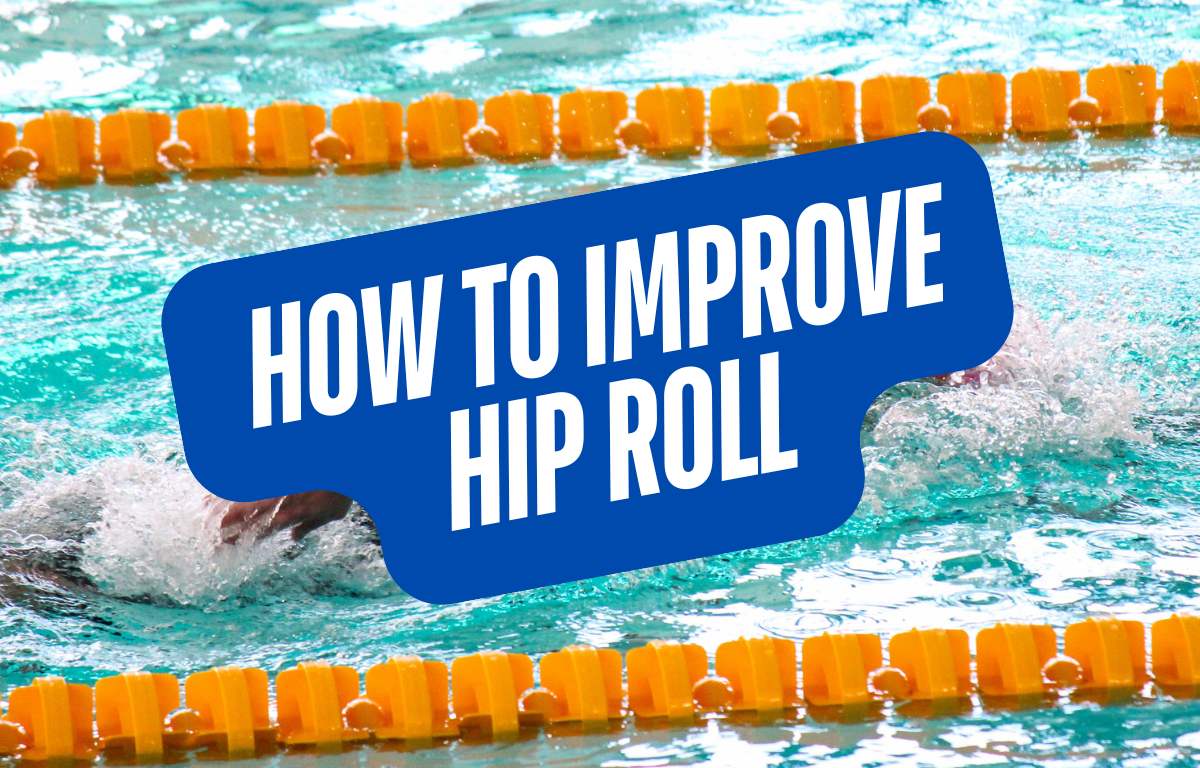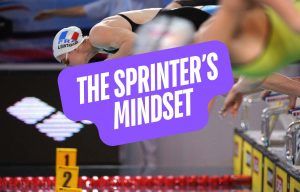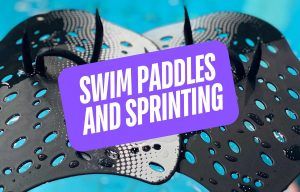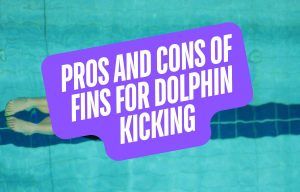Unlock smoother, faster freestyle with better hip roll. Learn what it is, why it matters, and how to improve it for faster swimming.
Hip roll is the silent assassin of a smooth and powerful freestyle stroke.
While the arms and legs get all the limelight, the hips create a rotational movement that sets up the pull and kick. It anchors everything from the catch to that powerful flick of the toes at the tail end of each freestyle kick.
Yet, for many swimmers, it’s neglected or misunderstood, and they allow their hips to be buoyed back and forth by the water like a rubber ducky getting bounced around in a wavey bath tub.
Let’s fix that.
In this article, we will do a deep dive on hip rotation in freestyle, how it differs from shoulder roll, and list some time-tested and battle-proven tips for improving hip rotation for faster freestyle swimming.
What is Hip Rotation in Freestyle?
Hip rotation, or hip roll, refers to the rhythmic rotation of a swimmer’s hips around the long axis when swimming freestyle. The hips naturally roll from side to side with each stroke, as one arm recovers and the other grips the water and pulls you through it.
Unlike shoulder roll, which is more obvious and is deeply involved with hand placement, arm recovery, and thrust generation, hip roll is more subtle.
But it’s equally important, with body roll—and hip roll in particular—playing a powerful role in fast freestyle swimming:
- Maintains a balanced and hydrodynamic body position
- Transfers force from the trunk to the lower body
- Reduces frontal drag
- Helps avoid shoulder impingement and “flat” arm recovery
- Increases distance per stroke
And more.
Hip Roll: It’s in the Breath
A surprising amount of hip roll simply comes down to the way we turn our head in the water to breathe. Turning the head to breathe creates rotational demand, and this demand doesn’t stop at the neck and shoulders.
For the mouth to clear the water and slurp down some of that sweet, sweet air, swimmers rotate the body, creating hip roll, leading to increased hip roll on the breathing side.
An example of how much the hips roll when breathing is found in a study by Barden and Barber (2022) who examined the hip roll on 18 competitive swimmers while swimming 100m freestyle at 70% of their maximal speeds.
See also: The Most Common Freestyle Technique Errors (and How to Fix Them)
Swimmers performed the trials breathing to one side (preferred side), bilateral breathing (every 3 strokes), and breathing through a swimmer’s snorkel.
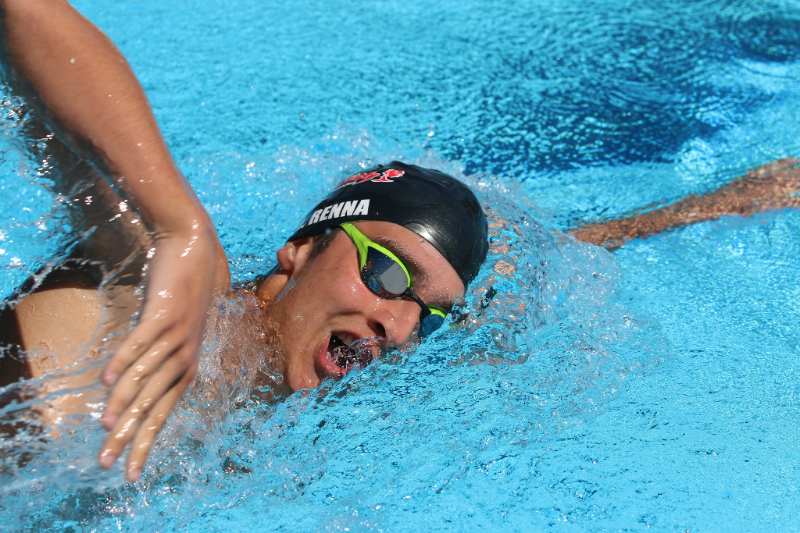
Each of the swimmers had an accelerometer on their waist during the trials to measure hip roll angles and average angular velocity (how fast the hips rolled).
Here are the big takeaways from this study for swimmers:
- Unilateral breathing leads to increased hip roll (9.6 degrees)—but mainly on the breathing side. There was ten degrees more hip roll vs the non preferred side (54.2 vs 44.6). The hips roll most when swimmers breathe exclusively to one side.
- When bilateral breathing, there was still increased roll on the preferred side, but about half as much when unilaterally breathing.
- Swimming with a snorkel led to the most balanced hip roll (47.2 vs 44.9). The preferred side breathing hip roll decreased, but wasn’t quite even, showing a lasting neuromuscular pattern based on long-term breathing habits and technique.
- Hip roll was fastest going away from the breathing side, most likely to compensate stroke timing for the imbalanced roll angles.
All of this points to a simple fact about hip roll: how you breathe shapes how you roll.
How Speed Changes Hip (and Shoulder) Roll
One of the more interesting things about this whole hip roll thing is that the same swimmer will use different speeds and ranges of hip roll depending on how fast they are going.
A 2020 study titled Kinematic Differences in Shoulder Roll and Hip Roll at Different Front Crawl Speeds in National Level Swimmers by Andersen et al. took a group of international-level swimmers and found that each swimmer’s hip roll changed depending on speed.
At sprint pace, the hips rolled significantly less but they moved faster within that smaller set of angles. Shoulder roll, on the other hand, stayed relatively constant but rotated forward much faster (leading to increased stroke rate).
| Variable | Sprint Pace | 400m Pace |
| Hip Roll (°) | 36.8° | 49.9° |
| Hip Angular Velocity (°/s) | 75.5°/s | 69.1°/s |
| Shoulder Roll (°) | 98.2° | 101.9° |
| Shoulder Angular Velocity (°/s) | 190.7°/s | 139.2°/s |
Sprint swimming relies more on twisting of the torso to maintain higher stroke rates, which means for swimmers, tight, controlled hip rotation is key.
How to Improve Freestyle Hip Roll
Like other aspects of your technique, whether it’s a clean early vertical forearm or developing a fast and hydrodynamic freestyle kick, mastering hip roll is a skill that can be mastered.
Here are some proven strategies swimmers of all stripes can use today at the pool to develop smooth, more balanced hip rotation.
Use a swimmer’s snorkel
Using a front-mounted swim snorkel eliminates the need to breathe, which can help swimmers focus 100% on technique and proper roll.
As we saw earlier, breathing causes roll asymmetry, and the swimmer’s snorkel removes this impediment to developing balanced and smooth hip roll.
With the head in a neutral position, swimmers can get a firmer grasp of the rolling rhythm of the shoulders and hips without the timing and coordination disruptions that come from turning our heads to slurp some of that sweet, sweet air.
See also: 7 Best Swim Snorkels for Better Technique and Faster Swimming
Pair with snorkel-less swimming to transfer the balanced hip roll. For example, alternating 50s freestyle, one with a swim snorkel, one without, for 20 reps gives you plenty of opportunities to carry over optimal hip roll to your normal stroke.
Breathe bilaterally
Swimmers are encouraged at an early age to bilaterally breathe in the water—breathing every three strokes—reduces overreliance on one side of your body, can help fix a “hitch” in your stroke, and can help address muscle imbalances (which are one of the leading causes of swimmer’s shoulder, FYI).
A study (McCable et al., 2015) with ten national-level swimmers showed that swimmers rolled their shoulders 12% more and the hips 6° more to their breathing side when swimming.
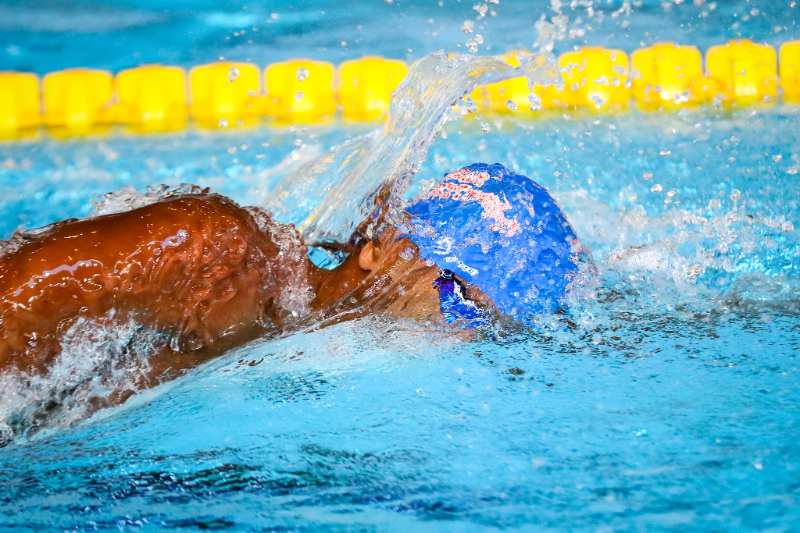
Reducing dominant-side use by bilateral breathing encourages a more balanced body roll, reducing twist, inefficient strokes.
Bilateral breathing is also a slightly harder aerobic workout compared to breathing every two strokes, to boot!
Add resisted swimming
Resisted swimming can be a powerful tool for improving hip roll speed—how quickly the hips roll or rotate.
A study (Gourgoulis et al., 2013) with nine competitive swimmers found that acceleration of the hips when rolling spiked when using resistance in the water.
This makes intuitive sense: when we add resistance, whether it’s a drag chute, DragSox, resistance tubing, or if you’re lucky, a power tower, we need to work harder to overcome the added drag. This also means that the hips roll with increased velocity.
There are lots of other reasons to add resisted swimming to your regular training line-up, but one of the underrated benefits is generating more power and control with your hip roll.
Use balancing and freestyle drills
Simple drills like floating on your stomach (use a snorkel) and gently rolling your hips from side to side, aiming for a 45-50° angle can do wonders for improving proprioception and postural awareness.
This simple, basic drill is a go for swimmers of all ages and abilities (after 30+ years in the water I still do this drill from time to time to reset my body positioning in the water).
Other freestyle drills swimmers can use to build more hip roll awareness include:
- Kicking, arms at side. Again, with a swimmer’s snorkel, set your arms at the side and kick, slowly rotating the shoulders and hips as you normally would. Removing the arm stroke allows swimmers the opportunity to focus exclusively on roll.
- 6-3-6 drill. A staple freestyle drill, 6-3-6 blends kicking, pulling, and balancing the hips. Do six kicks with one arm extended, on your side. Do three strokes. And then six kicks with the other arm extended, on your other side. Awesome for emphasizing hip roll timing and building better balance and stability on both sides of your body.
Balancing drills are a great tool early in your swim workouts when you want to establish optimal hip roll before the big, greasy main set.
Improve Core Strength
Core training is one of the essentials for competitive swimmers looking to improve in the water. Especially for building a strong and stable foundation to roll the hips with control and precision.
See also: 5 Dryland Core Workouts for Faster Swimming
While the hips are the star of the show, it’s the core muscles, particularly the internal and external obliques and transverse abdominis the control the movement.
While they don’t directly initiate the roll (the core muscles don’t fire until around 300-400ms after the roll begins), they do function like a brake on the rolling movement, stopping the movement so that you can roll back in the other direction.
There’s plenty of research to go around on the benefits of core training for swimmers (Karpinski et al., 2020; Khiyami et al., 2022; etcetera), one of the sneakier perks of doing all those planks, Pallof presses, Russian twists, and Pot Stirrers is having a firmer grip on movement in the hips.
The Bottom Line
A lot goes into trying to improve your freestyle stroke. A clean catch. That early vertical forearm. Building a stronger kick and pull.
Improving hip roll can be the thing to help put everything else together. With optimal hip roll, swimmers can set-up the catch with more power. Exert more force during the pull and push phases. And so on.
Work on your hip roll at the pool today, and roll your way towards faster, smoother, and stronger swimming.

